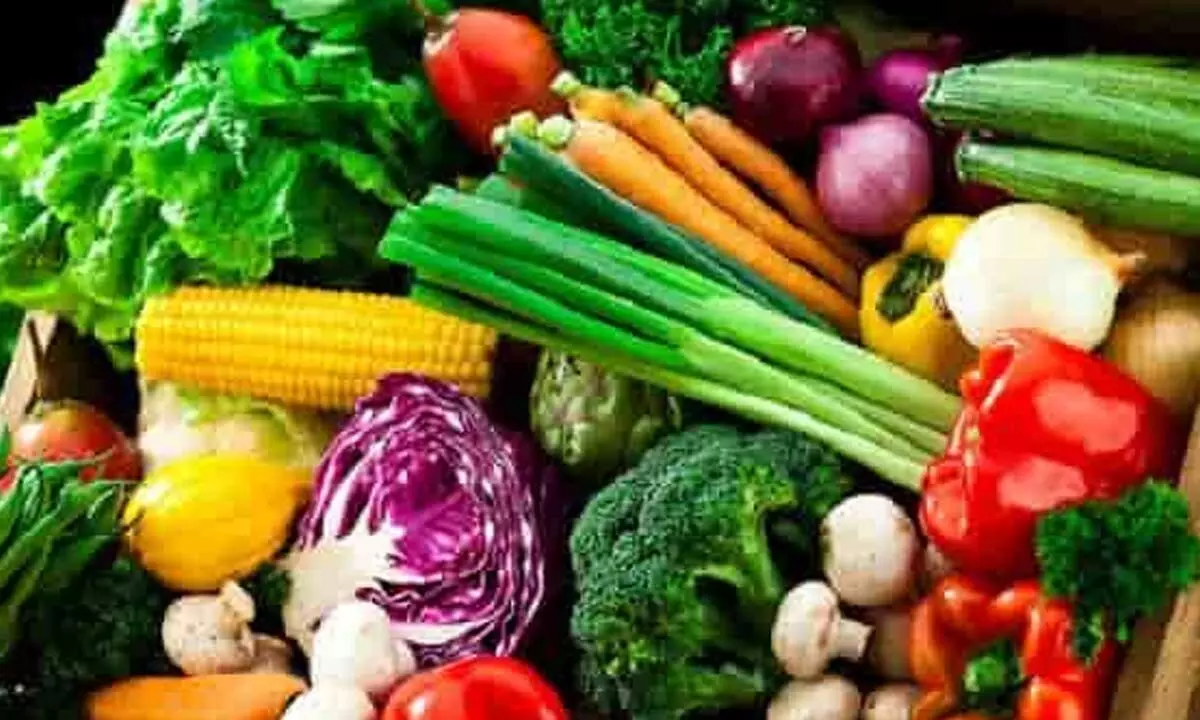Live
- Literature crucial in nurturing creativity
- Academicians debate on trends observed in 2024 General Elections
- Adah Sharma to perform Shiv Tandav stotram at the MahaKumbh mela
- Haryana Guv urges TG, AP CMs to implement NEP-2020
- Tail-end farmers should get irrigation water, says Uttam
- SpinSci to churn out 1K AI-based jobs in Telangana
- Kothapalli-Manoharabad rly line to be operationalised by 2027
- Industrial production at 6-mth high in Nov
- Traffic restrictions on heavy vehicles in Rachakonda
- BoB signs MoU with Singareni
Just In

Know about climate-friendly diet
Why the climatarian diet is the way forward to minimise carbon footprint, combat climate change
The climatarian diet essentially refers to one whose main aim is to reverse climate change. It involves eating locally produced food and less packaged and processed food to reduce energy wasted in transportation; opting for foods that restrict gas emissions, and utilising all ingredients in food to limit food waste. Aman Puri, Founder, Steadfast Nutrition, a premium sports nutrition brand, says, "With growing awareness about the climate change and global warming, people globally have become more open to adopting ways and means to reduce their carbon footprint. More and more people are considering a climatarian lifestyle as a healthy choice. A climatarian diet focuses on finding more sustainable choices not only from own health perspective but also considers the well-being of the environment."
As per the United States Environmental Protection Agency, the constant rise in carbon emissions is harming the planet through rising temperatures and sea levels. This in turn is wreaking havoc on the environment through increased heatwaves, floods, droughts, and storms. A climatarian diet comes into play here as it helps reduce the carbon footprint by focusing more on plant-based, and locally available seasonal foods. Livestock is considered to be the biggest contributor to two major greenhouse gases - methane and nitrous oxide. Cutting down on meat consumption and choosing more locally-sourced foods can have a positive impact on the environment. Animal foods, especially beef, leads to higher carbon emissions than plant foods. Below mentioned are some of the foods that you can include in your daily diet to alleviate the climatic effect:
Lentils and legumes are not only packed with nutrients, but they are environment-friendly as well. They do not need a fossil fuel-based fertiliser, or an extensive water supply for their irrigation, which keeps their carbon footprint quite low. Locally produced seasonal fruits and vegetables also have a significantly low carbon footprint. Furthermore, you can reduce the processing, packaging, transporting cost, and even the risk of spoilage if you decide to buy local and seasonal produce or grow foods in your kitchen garden.
Whole grains such as oats, pasta, brown rice, and wheat are rich in energy, fibre, minerals, and vitamins. They require less processing and technology which can save environmental energy and help lower the carbon footprint. One good way could be to combine all these ingredients in a single meal such as vegetable pulao or mixed vegetable curry. When we talk about nuts and seeds, the most environment-friendly ones would be peanuts, hazelnuts, and sunflower/pumpkin/watermelon seeds. These serve as an excellent source of protein, fibre, good fats, and micronutrients, with a considerably low carbon footprint. The production of meat products, mainly beef, requires more resources like land and water. It also results in higher carbon emissions. Thus, it would be smarter to swap beef with chicken, as it can reduce the carbon footprint by almost half. Try to avoid foods like palm oil as it leads to deforestation, erosion and depletion of soil and disturbance of the natural habitat, and a higher rate of carbon emissions. Farmed fishes can also lead to environmental degradation as their waste product can lead to water pollution, and their high number can give rise to bacterial and other diseases. Beef and lamb meats are majorly responsible for environmental deterioration. Looking at the figures, the production of beef, mutton, and milk can contribute to about 80 percent of the total carbon emissions under the livestock category. Increased demand for coffee has led to its increased production. This has further resulted in a higher rate of deforestation, extensive water supply, and run-off that is causing pollution in the waterways and leads got destruction of natural habitats. Sugar is one such food item that requires an intensive water supply. This can lead to soil erosion, and contamination of the waterways. It may also be detrimental for the flora and fauna existing underwaters.
The way to maintain a climate-friendly diet is to reduce waste as much as possible. Climatarianism doesn't restrict its followers to be a vegetarian, non-vegetarian, or vegan. It allows people to include smaller quantities of animal products if they don't want to completely eliminate them from their diet. However, it is recommended that people opt for lower carbon footprint sources of animal products. More emphasis is laid on shopping from a local market to reduce the carbon emissions caused by transportation and other packaging techniques.

© 2025 Hyderabad Media House Limited/The Hans India. All rights reserved. Powered by hocalwire.com







